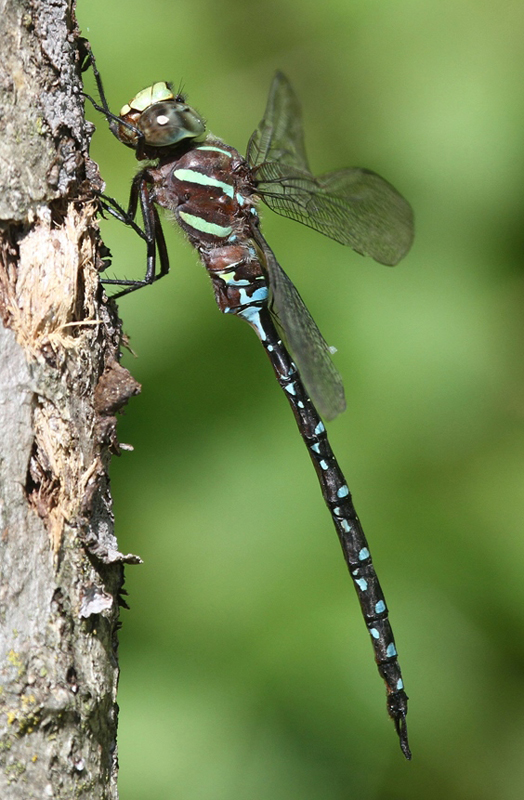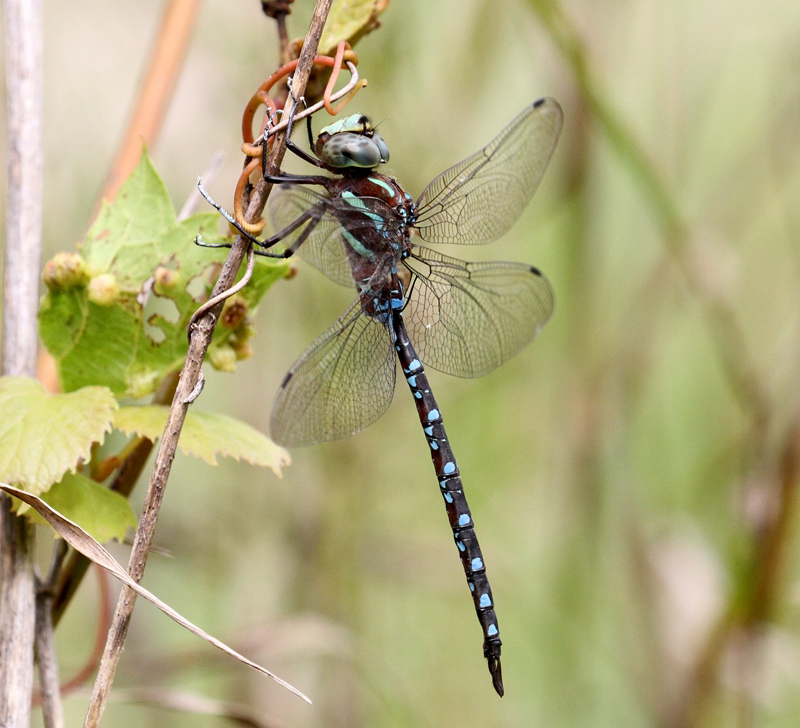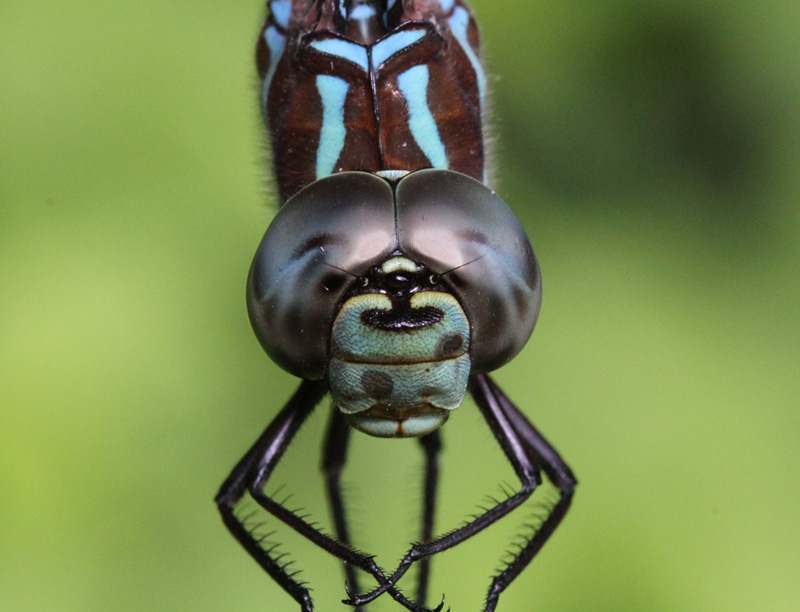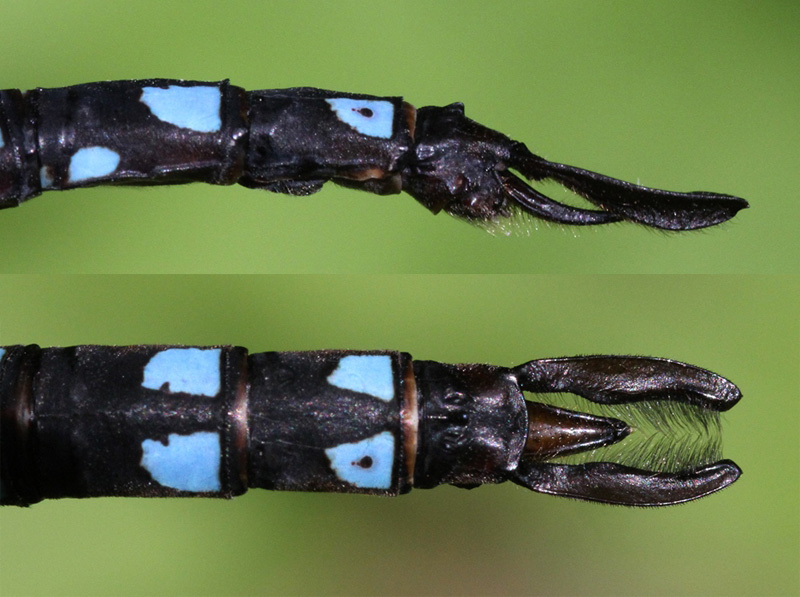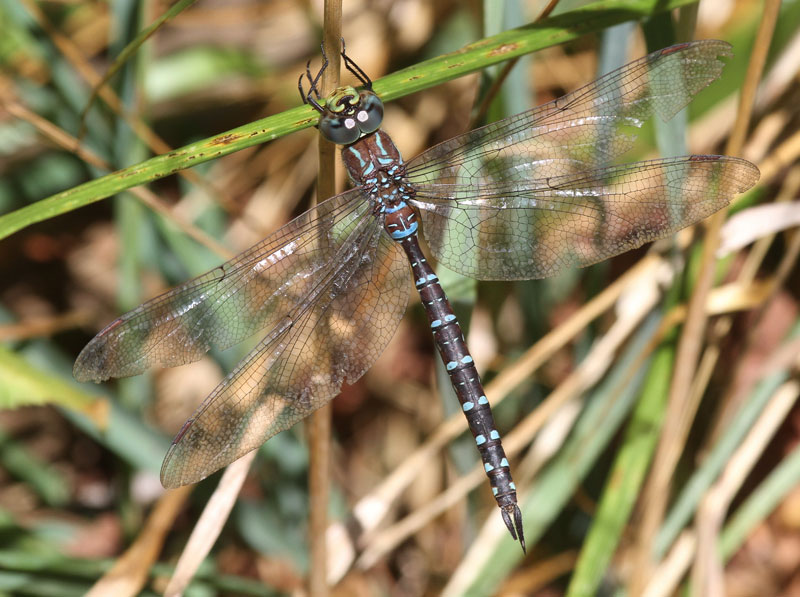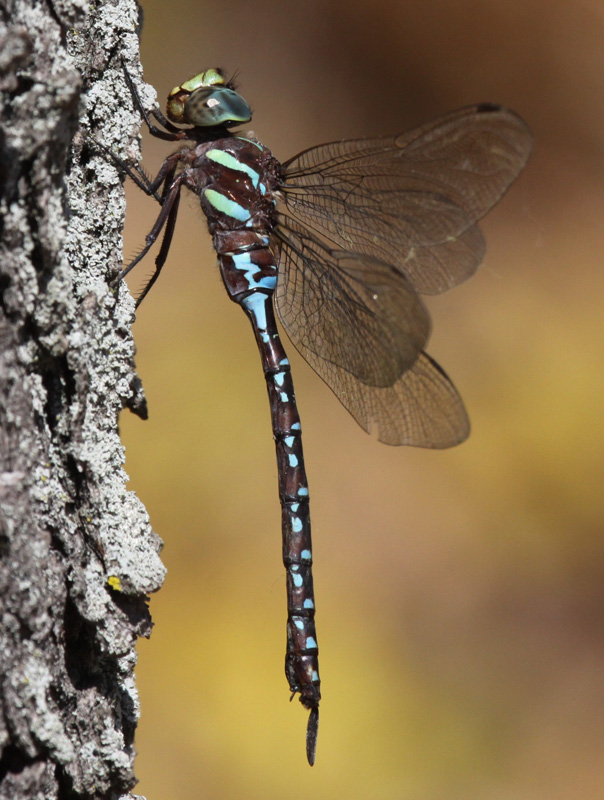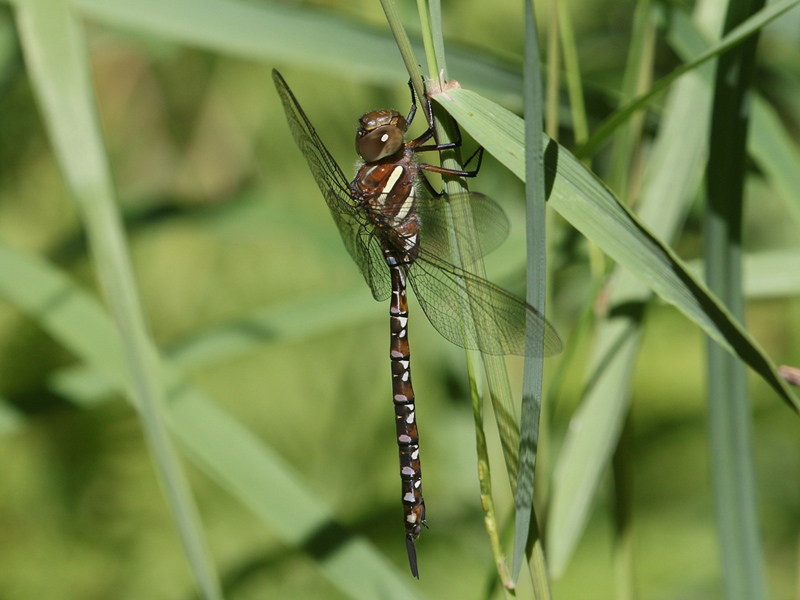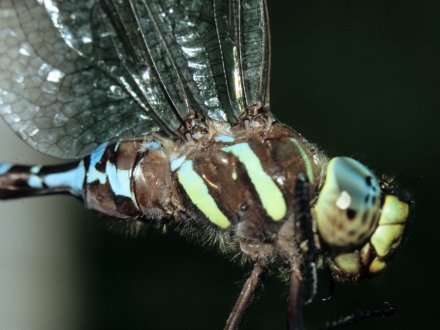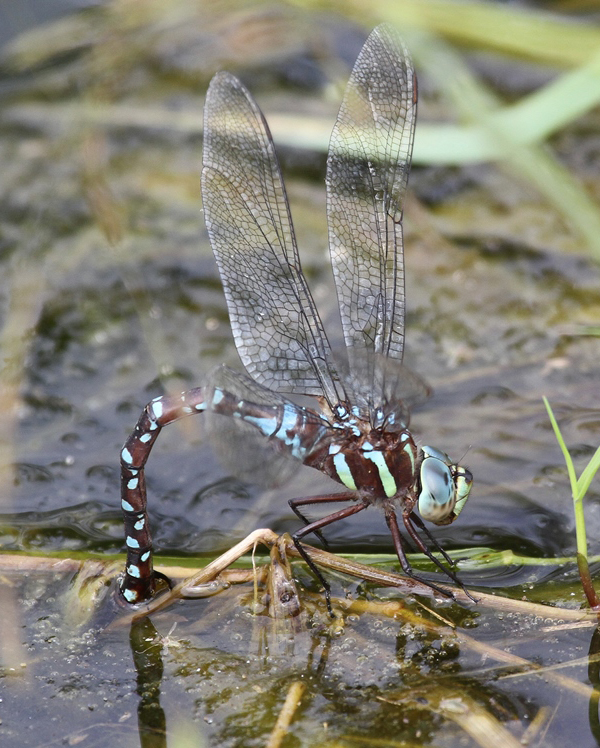




Aeshnidae, Darner Family
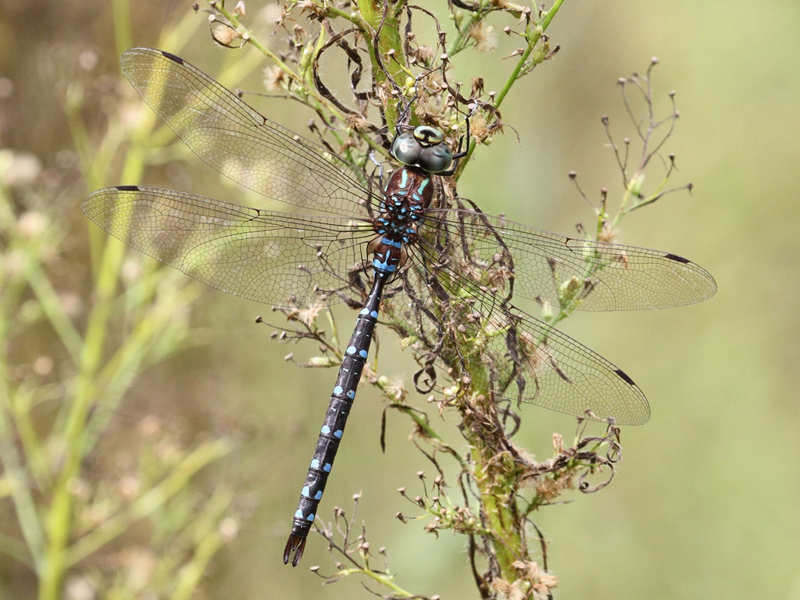
The mosaic darners of the genus Aeshna (aka blue darners) are large, strong-flying dragonflies with late-season flight periods. Most are similar to each other in size and general coloration, so in-hand examination is usually necessary to identify them. The most important distinguishing characteristics for this genus are the shapes and colors of the pale stripes on the sides of the thorax, especially the first or anterior stripes (here referred to as anterior thoracic side stripes [ATSS]), and the shapes of the cerci (upper pair of claspers) at the tip of the abdomen (whether paddle type or wedge type). Other marks that are often helpful include the presence/absence of a black line across the face, and the sizes of the pale spots on top of the abdominal segments (S), including the presence/absence of a spot on S10. Refer to the images of Aeshna species on the species pages of this website to compare shapes of thoracic side stripes and consult any dragonfly field guide for illustrations of the claspers (some guides are listed in the Resources Section).
Status-Global/State:
Distinguishing Characteristics:
This large, slender, dark-appearing darner has straight anterior side stripes on the thorax that are usually a beautiful bluish-green in both genders. It is distinguished from other mosaic darners in having abdominal segment 10 (S10) entirely dark with no pale markings (some female lance-tipped darners share this characteristic). Males have paddle-type claspers. Females usually look much like males in color and in having a narrow waist (these are andromorphs, heteromorph females with pale colors yellow-green are common among most mosaic darners but are uncommon in this species). Female's cerci are unusually long and pointed.
Description of Habitat/Range:
This species is found throughout southern Canada and much of the northern United States. It is relatively uncommon but widely distributed throughout Wisconsin. Preferred habitats are lakes and ponds in forested areas, especially acidic ponds with some bog vegetation; also well-vegetated slow streams. Often seen in single-species or mixed-species feeding swarms.
Flight Season:
Late June to early October in Wisconsin.
(Click on photos to enlarge)
